Bill Fateley and Ellis Lippincott: Remembering the Men Behind the Awards
Friends remember these icons for their achievements and for their friendship.
Despite the prestige of the awards that bear the names of Ellis R. Lippincott and Willam G. Fateley, many spectroscopists know little about them. Here, we remember them, not just for their scientific achievements, but for the men they were.
At the 2012 SciX meeting in Kansas City, Missouri, the Coblentz Society, together with the Society of Applied Spectroscopy, sponsored a luncheon to benefit the award endowments honoring two renowned spectroscopists of our century: Dr. William G. Fateley and Dr. Ellis R. Lippincott. As part of the luncheon program, Bruce Chase and Peter Griffiths talked about the achievements of these two members of the spectroscopic community and shared personal stories about them.
A Colleague and Friend: Recollections of Bill Fateley
by Bruce Chase
We often use the phrase "colleague and friend" without a lot of thought about the true meaning of the phrase. We all have many colleagues but a significantly smaller number of true friends. For me, Bill Fateley was both.
Over his career, Bill made many contributions to the field of vibrational spectroscopy. He published several texts on infrared and Raman spectroscopy, including a wonderful compendium of Raman group frequencies. He was one of the leading proponents of the advantages of Fourier transform infrared spectroscopy (FT-IR) in the early years of this technique. He used FT-IR as a remote sensing tool and established the validity of FT-IR as a tool to monitor atmospheric components. Bill also showed how Hadamard techniques could be used for infrared measurements. Yet, even though Bill's contributions to vibrational spectroscopy were significant, I believe his impact on the community was largely a result of his ability to bring young scientists into the field.
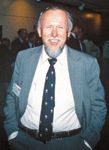
Figure 1: Dr. William G. Fateley.
I first met Bill Fateley (Figure 1) in 1977 at the International FT-IR Conference held in Columbia, South Carolina. I was a newly minted analytical chemist at DuPont, and I was just starting to learn about Fourier transform spectroscopy. The major players in the relatively new field of FT-IR were there and, of course, it was not an easy task for an unknown to sit and talk with them. I asked a question at one of the plenary talks, and afterward, Bill came up to me and asked if he could talk with me. At that point, I was nearly speechless! Bill talked with me for half an hour and by the end of the week I had been asked to join the organizing committee for the 1981 meeting. This marked the beginning of a friendship that would last for more than 30 years. During those 30 years, I watched Bill be just as kind and caring to other young spectroscopists and make an effort to bring them into our community.
Those young scientists who worked with Bill represent a big group who benefited from his friendship. In addition to the day-to-day contact with Bill, they also were able to meet other leaders in the field through attendance at meetings. This was a concept that Bill fully supported, and there were even times when he paid the bills out of his own pocket. The most memorable meeting in my mind had to be the 1987 Fourier Transform Spectroscopy (FTS) meeting in Fairfax, Virginia. Bill brought his entire group in the infamous mobile laboratory van that was part of an Environmental Protection Agency funded effort for remote monitoring. That van became the focus of almost all social events during the meeting. Bill's students, along with Peter Griffiths' group (Peter also brought his entire group), were the movers and shakers for all of the evening activities. One night, there were close to 80 people packed into the van. The driving force was the fact that the campus was technically dry, so the consumption of alcohol was limited to the inside of the van. It was an excellent example of a crystallographic closest packed structure!

Figure 2: Kip Chase enjoying a ride on a horse that "Cowboy Bill" Fateley made for him.
My friendship with Bill immediately extended to my wife Jamie and my son Kip. They both became very close to Bill and there was always at least one phone call a week. Kip's friendship with Bill was cemented very early. When Kip was three years old, Bill visited and stayed with us for the first time. When he arrived at the house, all Kip saw was a large man with a huge shiny belt buckle and pointed-toe cowboy boots. The man was immediately dubbed "Cowboy Bill." When Kip asked about the pointed-toe boots, he was told they were an absolute necessity for trapping cockroaches in the corners of a room and crushing them! Kip thought that was a wonderful thing. Two weeks after Bill's visit, a package arrived. The package contained a pair of pointed-toe cowboy boots just the right size for Kip. For the next several months I spent a lot of time cleaning scuff marks from the corners of every room in the house.
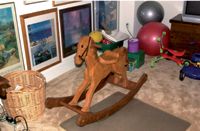
Figure 3: Dr. Fateley's horse lives on for future generations, much like his legacy.
Kip's history with Bill is summed up very nicely in the pictures shown here (Figures 2–5). Bill made Kip two wonderful rocking horses that Kip loved (Figures 2 and 3). The little blond-haired boy ended up working with Bill for a senior project in high school and actually published a paper with him while working at DOM Associates. Now the next generation is playing on one of those rocking horses, as Kip's son, Noah, maintains the connection with Cowboy Bill (Figure 5).
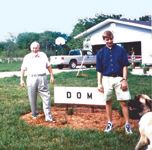
Figure 4: Bill Fateley (left) and Kip Chase (right).
Friendship with Bill carried a certain element of risk. You knew you were a true friend when the practical jokes started. Jamie found this out the hard way. On another of Bill's visits, Jamie took him to the Brandywine River Museum to see an exhibit of Wyeth paintings. There was a series of paintings of a young woman named Helga, several of which were nudes. In this staid, conservative museum, Bill walked up to one of the paintings and loudly proclaimed to everyone within earshot that this painting was clearly a forgery, since he knew from personal experience that Helga had a mole over her left breast. Jamie tried in vain to disappear through the floor. Their relationship of friendly teasing continued for three decades.

Figure 5: Bruce Chase's grandson riding Cowboy Bill's horse.
Bill was just as generous with Jamie as he was with Kip. We still have multiple items in the house that remind us of Bill, including a wooden angel. The most precious to Jamie, however, is a collection of antique rolling pins. On one visit, Bill learned that Jamie had an old rolling pin that her grandmother had given her. For several years after that visit, packages containing antique rolling pins showed up on a regular basis. They now hang in the kitchen (Figure 6) as a daily reminder of our good friend, Cowboy Bill Fateley. Bill was truly a colleague and a friend, to me and to the entire vibrational spectroscopy community.
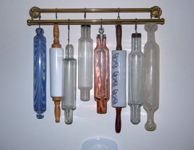
Figure 6: Antique rolling pins serve as a personal reminder of Bill Fately for Bruce Chase and his wife Jamie.
Life-Changing Croquet: Recollections of Ellis Lippincott
by Peter Griffiths
I believe it is true to say that in the 1950s and 1960s, there were three leading academic practitioners of chemical infrared spectroscopy in the United States: Bryce Crawford, Richard Lord, and Ellis Lippincott. Of the three, Lippincott probably had the widest range of interests. His first academic position was at Kansas State University, where he developed a potential function for the hydrogen bond that is usually known as the Lippincott-Schroeder potential (1). Four decades after the publication of this work, when the development of computers allowed sophisticated ab initio computations to be made, the Lippincott-Schroeder potential still proved to be an excellent model of the hydrogen bond (2).
Shortly after that work was published, Lippincott moved to the University of Maryland, where he demonstrated that his experimental skills were every bit as strong as his theoretical expertise. In a very productive partnership with scientists at the National Bureau of Standards, Lippincott was responsible for the development of the diamond anvil cell, with which spectra of materials at pressures up to 50,000 atm could be measured routinely (3). These devices are still being used today for applications ranging from explosives studies to forensic measurements.
In the early 1960s, there was a growing awareness that examiners in the US Patent Office did not consider an infrared spectrum to be characteristic of a molecule for patent purposes. The Coblentz Society ran a symposium at the 1962 American Chemical Society National Meeting in Washington, D.C. On behalf of the society, Lippincott presented a definitive paper titled, "The Limitations and Advantages of Infrared Spectroscopy in Patent Problems," which was subsequently published in the Journal of the Patent Office (4). As a result, the Patent Office's view of IR spectroscopy underwent a major change that is still applied today.

Figure 7: Attendees at the EUCHEM Conference on Far-Infrared Spectroscopy, held at Culham College, Oxford in September 1966. Among the names that may still be recognized today are (A) Ellis Lippincott, (B) Foil Miller, (C) Richard C. "Dick" Lord, (D) Ludwig Genzel, (E) Harold "Tommy" Thompson, (F) Alastair Gebbie, (G) Bill Fateley, and (H) Peter Griffiths.
I first met Ellis Lippincott at the EUCHEM Conference on Far Infrared Spectroscopy that was held at Culham College, Oxford, in September 1966. I was a graduate student at Oxford University under the supervision of Harold W. ("Tommy") Thompson, who organized the conference. The group photograph of the attendees is shown in Figure 7, where I have labeled a few of the better-known attendees. Fellow graduate student Roger Lake and I were the "gophers" for this meeting, which gave us the opportunity to meet many of the most influential spectroscopists of that era (and later). One day, we were approached by Tommy Thompson, who said in his usual gruff manner, "Lord and Lippincott want to learn how to play croquet — go teach them." A year later, Roger was on his way to post-doc with Dick Lord at MIT and I was traveling to College Park, Maryland, to post-doc with Ellis Lippincott. That game of croquet changed my life!
There were eight post-docs working in Lippincott's group at that time, on projects as diverse as the construction of an argon ion laser for Raman spectroscopy (Ar+ lasers were not commercially available in 1967), to the investigation of the formation of small-molecule biological precursors in an electrical discharge — a field sometimes known as "Urey-Miller chemistry." Lippincott collaborated with Margaret Dayhoff at the National Institutes of Health and with Carl Sagan at Harvard (5–8). This group proposed that biologically important precursors could be produced by minimizing the total free energy of gases in planetary atmospheres, and I opted to work on both the theoretical and experimental aspects of this project. This may be surprising, because my doctoral research at Oxford was on the measurement of pure rotation spectra of symmetric tops with a slow-scanning high-resolution far-infrared FT-IR spectrometer. With that instrument, which had been developed by Alastair Gebbie at the UK National Physical Laboratory, interferograms were output onto punched paper tape at the rate of about one point every 2 s; it took 6 h to acquire a complete interferogram, and the computation of each spectrum took another hour. At the end of this project, I never wanted to use another FT-IR spectrometer in my life! That explains why I opted to work on the project where the formation of biological precursors was being investigated. I arrived in Lippincott's lab just too late to work with Carl Sagan, but nevertheless we managed to come up with some interesting theoretical (8–11) and experimental (12) results.
In the summer of 1968, Lippincott was approached by Tom Dunn, a sales representative of Block Engineering, with an interesting proposal. A few years earlier, under a military contract, Block Engineering had developed a small rapid-scanning interferometer that had produced some remarkable results in the field. Myron Block and Tom Dunn were interested to see whether this instrument, despite its low resolution (16 cm-1 ) and the fact that only single-beam spectra could be obtained, had the potential to be used in chemical laboratories. In light of Lippincott's reputation, they put one of these instruments in his lab so that his students could compare its spectra with spectra measured on conventional grating spectrometers. Because I had experience with the slow-scanning interferometer in the far-infrared, Lippincott asked me if I would be interested in doing some of these experiments. For several months, John Lephardt (a graduate student in Lippincott's laboratory) and I obtained some promising spectra. One of the most successful experiments involved the on-line measurement of the spectra of molecules eluted from a gas chromatograph. John and I wrote the draft of a paper on this topic but we were told that we should not submit it for publication because Block Engineering had developed a far more advanced high-resolution (0.5 cm-1 ) interferometer and they were planning to introduce it commercially by the end of the year. That spectrometer (marketed as the Digilab FTS-14), which had laser fringe referencing and a triglycine sulfate pyroelectric detector and was operated under the control of a minicomputer, was the precursor of today's FT-IR spectrometers. Block Engineering installed the prototype in Ellis Lippincott's laboratory and took his advice on changes that should be effected to make it more attractive to chemical spectroscopists.
Another project being worked on in Lippincott's lab in the late 1960s and early 1970s was the study of "poly-water." Two Soviet physicists, first Nikolai Fedyakin and later Boris Derjaguin, had performed measurements on the properties of water that had been condensed in narrow quartz capillaries. Some of these experiments resulted in what was seemingly a new form of water that had a higher boiling point, lower freezing point, and much higher viscosity than ordinary water. Western scientists took no notice of this work until 1966, when Derjaguin presented his work on what he called anomalous water at a Faraday Society discussion meeting in Nottingham, England. English scientists then started researching the effect as well, and by 1968 it was also under study in Lippincott's laboratory, in collaboration with the National Bureau of Standards.
In a paper in Science, Lippincott and colleagues described the results of an infrared and Raman spectroscopic study of "anomalous water" both in and out of the capillaries that appeared to show that the material was a true high polymer consisting of H2O monomer units (13). The OH stretching bands prominent in the spectrum of normal water were absent and new bands near 1600 and 1400 cm-1 appeared. They interpreted this to mean that new and previously unreported strong symmetric OHO bonds were formed that were isoelectronic with FHF- . These bonds, which are so strong they could not be considered normal O-H hydrogen bonds, were believed to be responsible for the remarkable properties of the material. The team proposed several structures that were consistent with the spectral data and the properties and stabilities of the material.
This work piqued the interest the popular press. I can even remember its being the subject of a comic strip in the Boston Globe called "Castaways"! Several scientists questioned the interpretation described in the Science paper and members of Lippincott group continued to work on "polywater," ultimately finding that surface creep is a factor in the transport of "polywater" into the capillary tubes. It was found to be possible to reproduce the infrared spectrum previously attributed to "polywater" by synthetic mixtures of salts of carboxylic acids, particularly acetic acid, even though microprobe analysis could not detect the presence of carbon. Because mass spectrometry did not show any features that were characteristic of multiple water units and attempts to reproduce the Raman spectrum previously reported were unsuccessful, Lippincott and his colleagues concluded that there was reason to seriously question the concept that water exists in a stable polymeric condition (14).
Tragically, Ellis Lippincott contracted Hodgkin's disease and died in March of 1972 before he had a chance to truly set the record straight with respect to "polywater." But his many other contributions to vibrational spectroscopy live on, and are recognized today by the Ellis R. Lippincott Award, which honors individuals based on both the importance and breadth of their contributions.
Peter Griffiths is professor emeritus at the University of Idaho in Moscow, Idaho.
Bruce Chase is a research professor in materials sciences and engineering at the University of Delaware in Newark, Delaware.
Jim Rydzak is the president-elect of the Coblentz Society and also works at GlaxoSmithKline Phamaceuticals in King of Prussia, Pennsylvania. Direct correspondence to: james.w.rydzak@gsk.com.
References
(1) E.R. Lippincott and R. Schroeder, Chem. Phys. Lett. 23, 1099 (1955).
(2) M.V. Vener, Chem. Phys. Lett. 244, 89 (1995).
(3) E.R. Lippincott, C.E. Weir, A. Van Valkenburg, Jr., and E.N. Bunting, Spectrochim. Acta 16, 58 (1960).
(4) E.R. Lippincott, J. Pat. Off. Soc. 45, 380–415 (1963).
(5) R.V. Eck, E.R. Lippincott, and M.O. Dayhoff, Science 146, 1461 (1964).
(6) R.V. Eck, E.R. Lippincott, M.O. Dayhoff, and Y.T. Pratt, Science 153, 628 (1966).
(7) C.E. Sagan, E.R. Lippincott, M.O. Dayhoff, and R.V. Eck, Nature 213, 273 (1967).
(8) M.O. Dayhoff, R.V. Eck, E.R. Lippincott, and C.E. Sagan, Science 155, 556 (1967).
(9) C.K. Weiffenbach, P.R. Griffiths, P.J. Schuhmann, and E.R. Lippincott, J. Phys. Chem. 73, 2526, 2532 (1969).
(10) P.R. Griffiths, P.J. Schuhmann, and E.R. Lippincott, J. Phys. Chem. 74, 2916 (1970).
(11) P.R. Griffiths, C.W. Brown, E.R. Lippincott, and M.O. Dayhoff, Geochim. Cosmochim. Acta 36, 109 (1972).
(12) P.R. Griffiths, P.J. Schuhmann, and E.R. Lippincott, Space Life Sciences 4, 278 (1973).
(13) E.R. Lippincott, R.R. Stromberg, W.H. Grant, and G.L. Cessac, Science 164, 1482 (1969).
(14) E.R. Lippincott, G.L. Cessac, R.R. Stromberg, and W.H. Grant, J. Coll. Interfac. Sci. 36, 443 (1971).
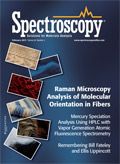
Best of the Week: AI and IoT for Pollution Monitoring, High Speed Laser MS
April 25th 2025Top articles published this week include a preview of our upcoming content series for National Space Day, a news story about air quality monitoring, and an announcement from Metrohm about their new Midwest office.
LIBS Illuminates the Hidden Health Risks of Indoor Welding and Soldering
April 23rd 2025A new dual-spectroscopy approach reveals real-time pollution threats in indoor workspaces. Chinese researchers have pioneered the use of laser-induced breakdown spectroscopy (LIBS) and aerosol mass spectrometry to uncover and monitor harmful heavy metal and dust emissions from soldering and welding in real-time. These complementary tools offer a fast, accurate means to evaluate air quality threats in industrial and indoor environments—where people spend most of their time.